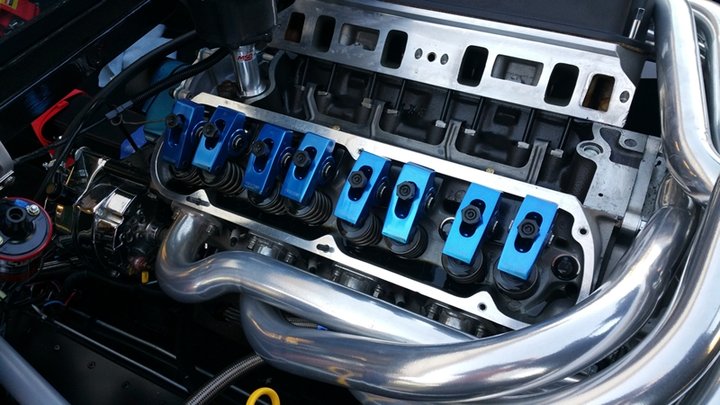Thank you Dave, appreciate the link and info. That's helpful.
I'm really hoping that someone might just give me a very basic description of what's the difference between solid lifters and hydraulic....? I'm guessing that solid is just a fixed length rod which is adjusted with a nut and set screw somehow to adjust the valves....whereas the hydraulic somehow automatically sets the clearance. But, again, I really don't know.
Are there pros/cons to each/either? What are they?
Any information helps. Thank you.
You are pretty much right in your description. Solid lifter, you adjust the nut on the rocker arm, hydraulic lifters pump up with oil and take up the lash automatically.
The pros and cons:
Hydraulic is what street engines use because they are maintenance free. You adjust them once when you install your valve springs and rocker arms and thats it. They make these in both roller and non-roller configurations.
Pros: Maintenance free and reliable.
Cons: heavy and 'pump up' too much when RPM's get high. Heavy limits the rpm and the 'pump up' issue holds the valves open all the time. You can build a pretty high RPM engine with them though, just have to know what you're doing.
Sold is a different story. They also make these in roller and non-roller. A solid-roller is the highest performance lifter that is made and is intended for high RPM race engines. The cons are they are short lived and are never to be driven on the street. Of course you can drive them on the street, but its always a risk. The problem with a solid roller is that they always have a little bit of lash. This lash means that the lifters are free to bounce within the confines of its lash, but when they do this, the little bearings in the rollers really take a pounding and eventually get a flat spot and fail. When they fail, all of the little needle bearings come out and go directly into your oil supply and wreak havoc on your engine, which is then effectively destroyed.
I'm not clear on why, but they say solid rollers take more of a beating at idle than they do at high rpm. Thats why they are not good on the street.
Of course, there are those masochists who have to have the most insane engine on the street and do run solid rollers. But they check the lash often, and keep a log of which lifters need the most adjustment. If they find that one lifter is requiring more adjustment than the others, they replace that lifter because thats the warning sign its going to go. Or of they hear even the slightest sound that something might be wrong, they quickly shut down the engine and check the lifters.
They say the lifespan of a solid roller on the street is anywhere from a few thousand to 20k miles. You never know when one is going to let go and why close tabs must be kept.

